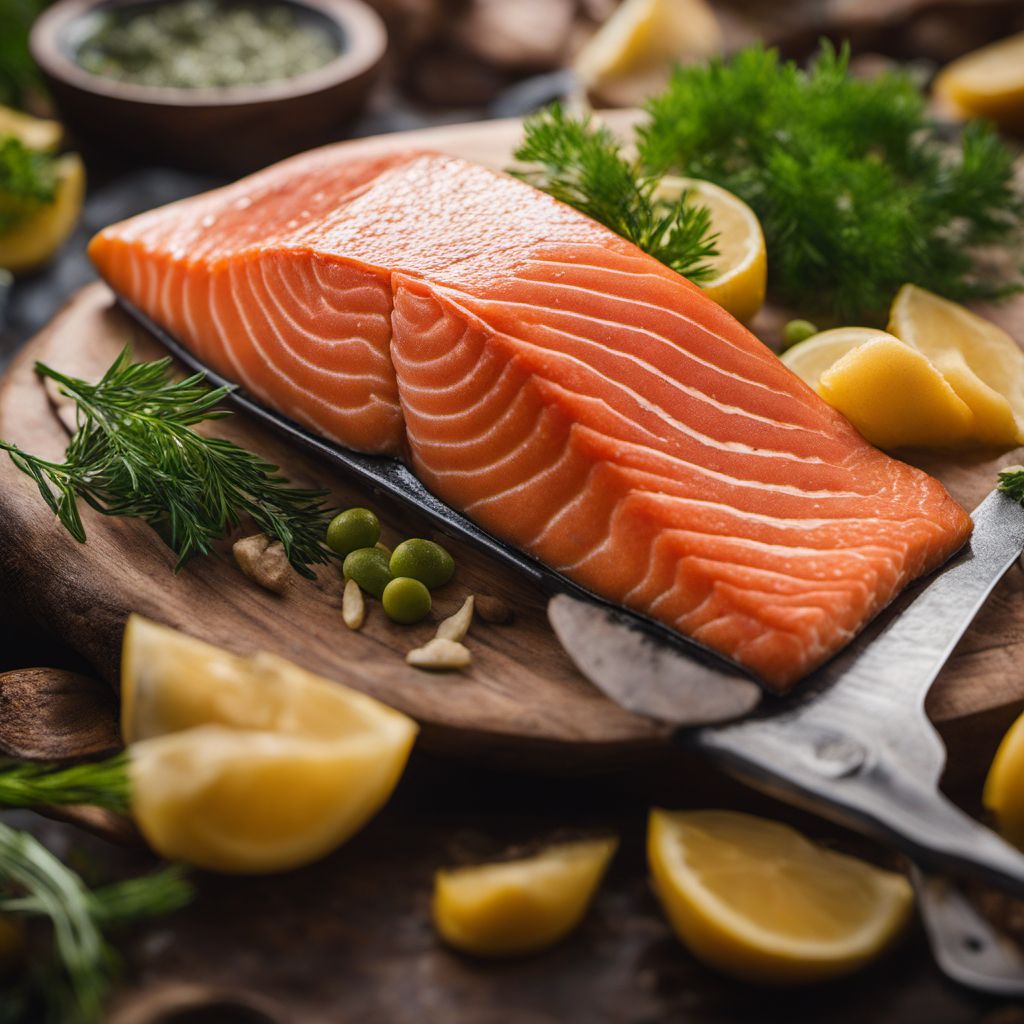
Ingredient
Chinook salmon
The King of Salmon
Chinook salmon is a large species of salmon known for its vibrant pink flesh, high fat content, and delicate flavor. It has a buttery texture that melts in your mouth, making it a favorite among seafood enthusiasts. The flesh is firm and succulent, with a mild, slightly sweet taste. Its color can range from pale pink to deep red, depending on the diet and habitat of the fish.
Origins and history
Chinook salmon is native to the Pacific Northwest region of North America, particularly Alaska and British Columbia. It has been an important food source for indigenous communities for thousands of years. Chinook salmon holds cultural significance for many Native American tribes and is an integral part of their traditional ceremonies and feasts. It is also commercially harvested and enjoyed worldwide for its exceptional taste and nutritional value.
Nutritional information
Chinook salmon is an excellent source of high-quality protein, omega-3 fatty acids, vitamin D, and B vitamins. It is also a good source of potassium and selenium. A 3-ounce serving of cooked Chinook salmon provides approximately 200-250 calories, depending on the cooking method.
Allergens
Fish allergens (finned fish) are associated with Chinook salmon.
How to select
When selecting Chinook salmon, look for firm, shiny flesh with no discoloration or strong fishy odor. The skin should be intact and have a vibrant color. If buying whole fish, check for clear, bright eyes and red gills. Freshness is crucial, so choose fish that has been properly stored on ice or refrigerated.
Storage recommendations
To maintain its freshness, Chinook salmon should be stored in the refrigerator at a temperature of 32-38°F (0-3°C). It is best to consume it within 1-2 days of purchase. If storing for a longer period, it can be frozen. Wrap it tightly in plastic wrap or place it in an airtight container before freezing to prevent freezer burn.
How to produce
Chinook salmon can be commercially farmed or caught in the wild. For amateur production, it is best to consult local regulations and guidelines for fish farming or aquaculture. Creating a suitable habitat with clean water, proper filtration, and appropriate feed is essential for successful salmon production.
Preparation tips
Chinook salmon can be prepared in various ways, including grilling, baking, broiling, poaching, or pan-searing. It pairs well with citrus flavors, dill, garlic, and soy-based marinades. To enhance its natural flavors, it is recommended to keep the seasoning simple. Overcooking can result in dryness, so it is important to cook it just until it flakes easily with a fork. Chinook salmon is versatile and can be used in salads, pasta dishes, sushi, or enjoyed on its own as a main course.
Culinary uses
Chinook salmon is commonly used in a variety of dishes, such as grilled salmon fillets, salmon steaks, salmon burgers, salmon chowder, and smoked salmon. It is a popular choice for sushi and sashimi due to its rich flavor and buttery texture. It is also frequently featured in Pacific Northwest cuisine and is often served with local ingredients like berries and wild mushrooms.
Availability
Chinook salmon is commonly available in the Pacific Northwest region of North America, particularly Alaska and British Columbia. It is also commercially farmed in other parts of the world, including Norway, Chile, and Scotland.
More ingredients from this category
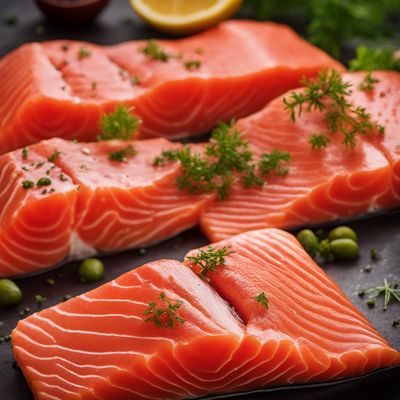
Sockeye salmon
The Mighty Sockeye: A Nutrient-Rich Delicacy from the Sea
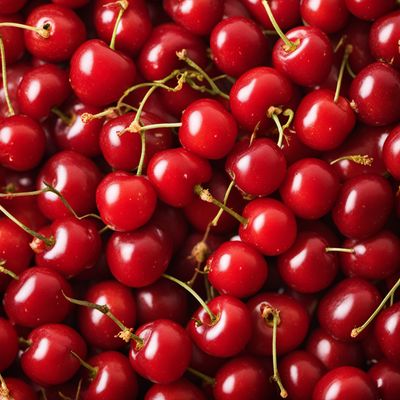
Cherry salmon
The Delicate Delight: Exploring the Flavors of Cherry Salmon
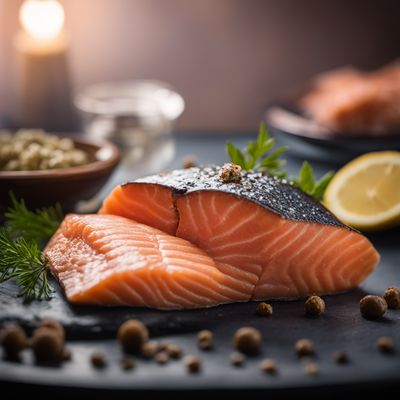
Chum salmon
The Mighty Fish of the North
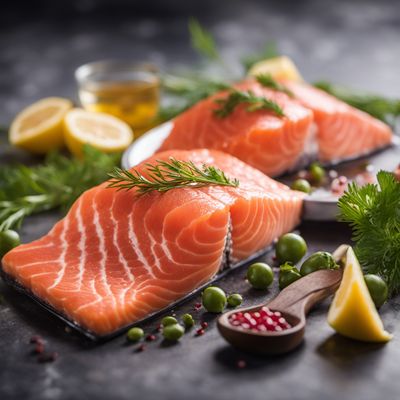
Pink salmon
The Vibrant Delight: Exploring the World of Pink Salmon
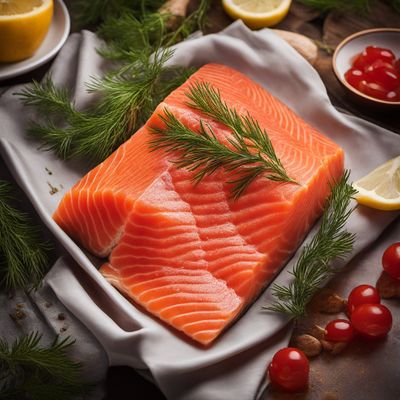
Coho salmon
The Mighty Coho: A Delicate and Nutritious Catch